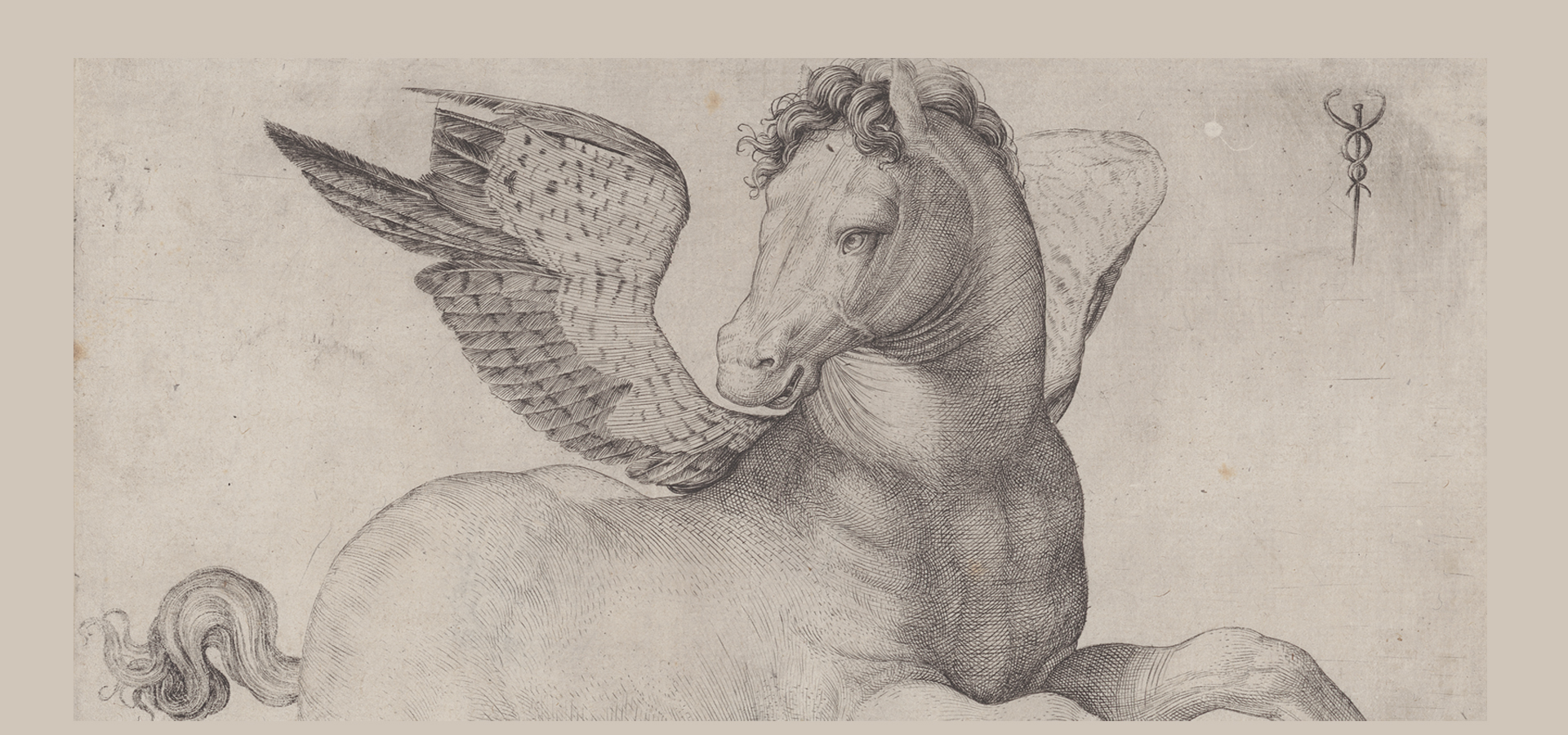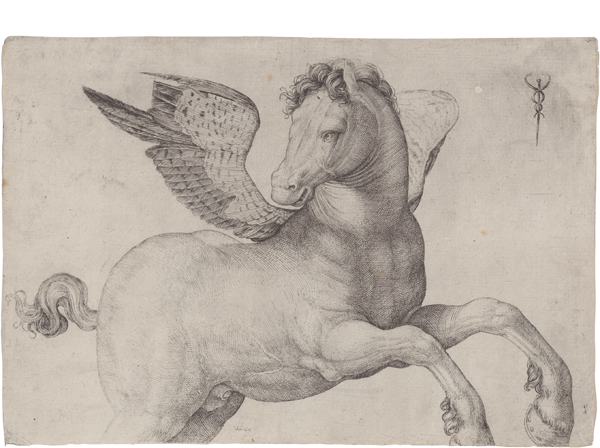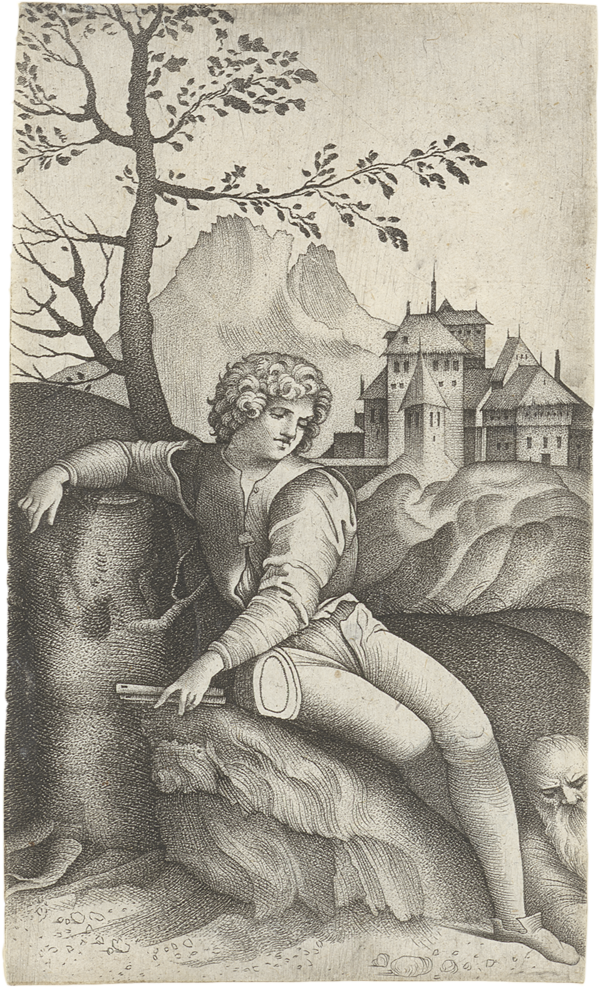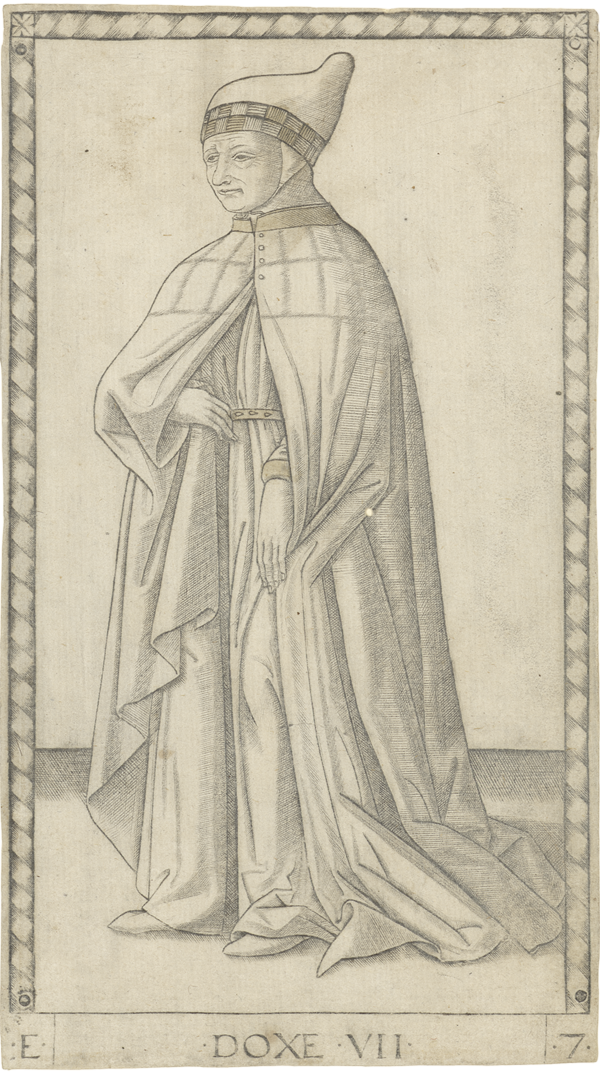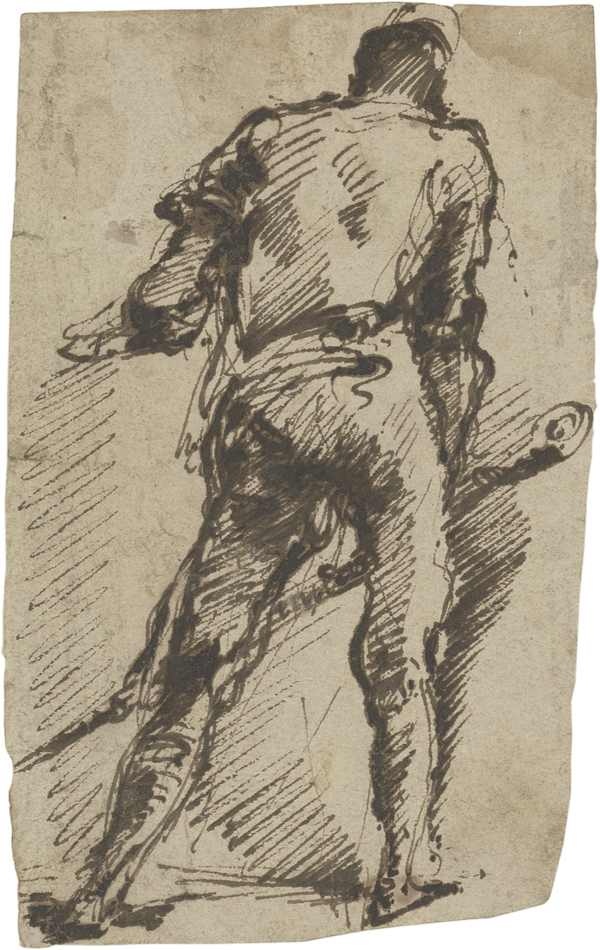VENEDIG.
La Serenissima Drawings and prints from four centuries
The exhibition
To those once arriving by ship from the mainland, Venice, located in the middle of the lagoon, must often have appeared more like a mirage than something actually solidly built. ‘La Serenissima’ – the Most Serene – rises above its own reflection rather than from solid ground. And so this city, that at times seems to float weightlessly and to consist merely of colours and patterns, was destined to follow a special path in things artistic. From around 1500 onwards the colours used by Venetian painters became increasingly intense and glowing and their pictures more atmospheric, so that the painted view of the world, immersed in light, often appears as if enchanted.
At the same time, masterly drawings and prints that reflect an unmistakable mentality were being produced in Venice. In these works artists generally express themselves even more directly than in their representative paintings – a softer tone is struck, often followed by more subtle melodies, not seldom resonating private emotions full of human warmth, expressing the melancholic and profound and addressing a humanistically educated clientele in coded messages: reason enough to revere these works from the extensive holdings of the Staatliche Graphische Sammlung München in an exhibition.

Selected city panoramas by Carlevaris and Canaletto, Marieschi and Brustolon provide an introduction to the exhibition and bring the era of ‘la Serenissima’ back to life. The tour continues with works by Jacopo de' Barbari and Giulio Campagnola, by form cutters from the circle around Titian and engravers from elsewhere, like Cornelis Cort and Agostino Carracci. Their sophisticated print technique, rivalling that of painting, contributed to the spread of Venetian art’s fame, far beyond Veneto and Italy, from as early as the 16th century onwards. In the 18th century, masters such as Canaletto and Tiepolo not only worked with the brush and in pen-and-ink and pencil but also took up the etching needle themselves, creating works of touching beauty, poetry and spiritual intensity, in which the master painters’ œuvres really come to perfection through the sparkling esprit of the atmospheric moods created. Fantastical vedute and Tiepolo’s famous Capricci and Scherzi, as well as Giovanni David’s series ‘Divers Portraits’, grant an insight into ‘la Serenissima’s’ soul.
The third section of the exhibition celebrates Venetian draughtsmanship. Gentile and Giovanni Bellini, Lorenzo Lotto and Jacopo Palma il Giovane not only worked in this grenre to create compositions for their images but also to explore new possibilities of expression. In addition to masterpieces by Titian, Tintoretto and Veronese, the only known drawing by El Greco from the artist’s early Italian period represents another focal point. Sheets by Amigoni and Tiepolo, Antonio Guardi and Francesco Fontebasso are highlights from the 18th century – and include masterly executed works referencing the masters of the 16th century, presenting their pictorial inventions in a new light and reflecting the continuity so characteristic of Venice’s artistic style in such an exhilarating manner. In short, the exhibition presents the exquisite holdings of the Graphische Sammlung through works of Venetian art on an impressive scale.
To accompany the exhibition, the catalogue VENEDIG. La Serenissima – Zeichnung und Druckgraphik aus vier Jahrhunderten, edited by Kurt Zeitler and with contributions by Maria Aresin and Ilka Mestemacher, has been published by Deutscher Kunstverlag. 352 pages with 216 illustrations. The publication of the catalogue has been made possible by the Ernst von Siemens Kunststiftung.
Planning your visit
Open today till 8.00 pm
Daily 10.00 – 18.00
Thursday 10.00 – 20.00
Monday closed
Barer Straße 40
80333 München
